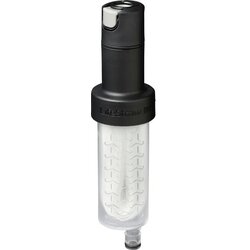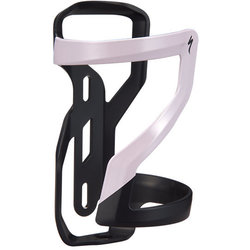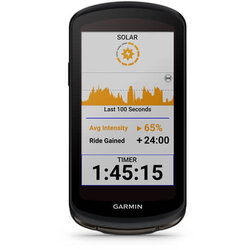How to stay hydrated in Colorado
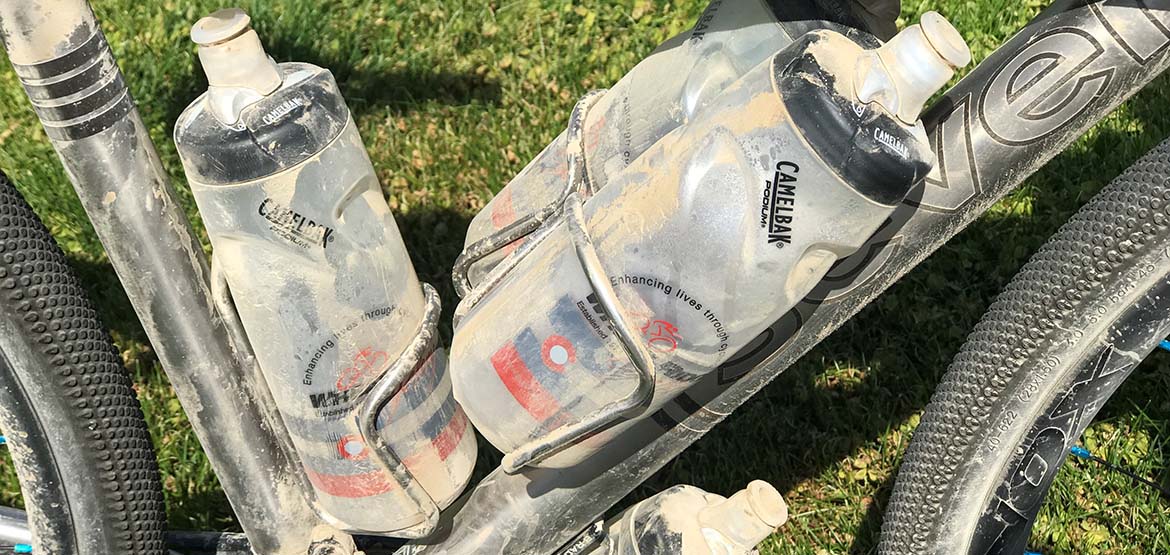
HOW TO STAY HYDRATED
Proper hydration is key to enjoying your day in the saddle, especially in the Colorado sun and heat. Hydration is something to be taken seriously. The consequences of improper hydration can be dire. Recently a mountain biker died of heat-related illness on the Palisade Plunge.
Around 60% of body weight is water, and research suggests that losing as little as 2% of body weight will negatively impact performance. Let’s get into what proper hydration is and how to approach it.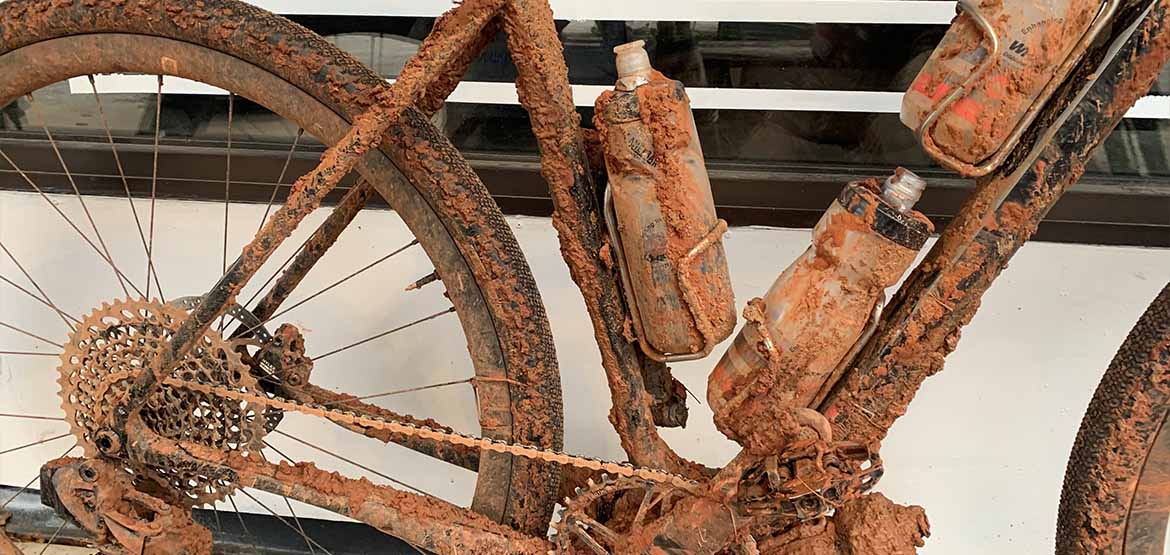
DANGERS OF DEHYDRATION
What exactly is dehydration? It’s more than just feeling thirsty. As we exercise, fluid loss occurs through perspiration and respiration. If this fluid is not replaced at regular intervals during the ride, we get dehydrated. Dehydration is an accumulation of effects that can quickly lead to heat exhaustion, heat stroke, and even death.
The effects begin with a decreased volume of blood circulating through the body. When this happens, the amount of blood pumped with each heart beat decreases, thus the muscles get less oxygen. Exhaustion sets in and performance suffers. Taken to the extreme, say running out of water miles before the end of a ride on a hot sunny day, a severe drop in blood pressure occurs, resulting in dizziness and confusion, fatigue, unconsciousness, brain swelling, seizures, and then death.
Additionally, waste by-products are not flushed out of the body as frequently as they would be with enough water in the system to do the job efficiently. Water helps remove these toxins from the cells for excretion through urine and breath.
Professional road cyclists receive massages after each day of competition. One of the most important aspects of this massage is to get those waste products out of the muscles. You will see the cyclist’s foot elevated on the masseuse’s shoulder as the masseuse repeatedly pushes from below the calf to the upper thigh, effectively driving toxins toward the core organs for elimination.
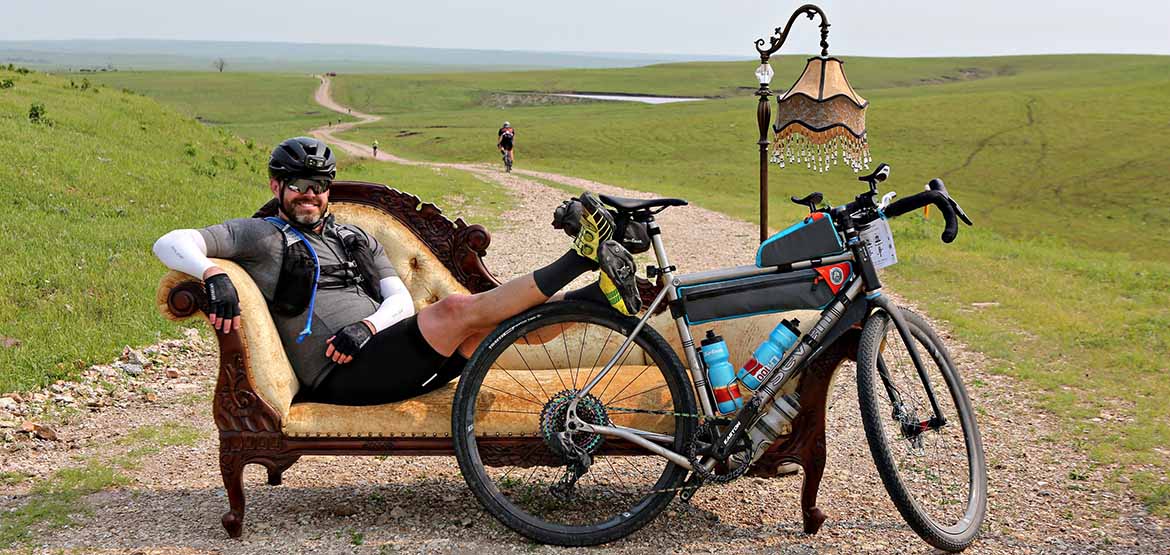
HYDRATING DURING YOUR RIDE
Proper fluid replenishment is the key to preventing dehydration. The best way to do this is by consuming plenty of fluids before, during and after the workout. While this all sounds quite common sense, it’s often overlooked.
Many cyclists simply wait to drink until they’re feeling thirsty. In fact, when you start to feel thirsty, your body has already surpassed that aforementioned 2% mark. Waiting to drink until you are thirsty will adversely affect your performance and health.
Oh, and if you had a few beers or glasses of wine around the campfire last night and didn’t start drinking water right away this morning? The diuretic effects of the alcohol have you even farther along in your dehydration – before you even start the ride.
So how do you ensure you’re hydrated?
- Drink water all the time, even if you’re not thirsty.
- During exercise, drink every 15-20 minutes.
If you want to get science nerdy and be certain, you can adhere to the guidelines established by the National Athletic Trainers Association, the Academy of Nutrition and Dietetics, and the American College of Sports Medicine, and monitor your fluid loss:
- Weigh yourself before and after training / workout / ride.
- For each kilogram (pound) lost during exercise, drink around .5 liter (2 cups) of fluid.
Another excellent indicator is urine color:
- Over hydrated: Almost clear yellow
- Hydrated: Pale shades of yellow
- Dehydrated: Bright yellow to darker yellow
- Extremely dehydrated: Orange to brown
For those who need the ultimate reminder and use a Garmin device with a heart rate monitor, you can get audible notifications from the unit alerting you when it’s time to drink. How ‘bout that?
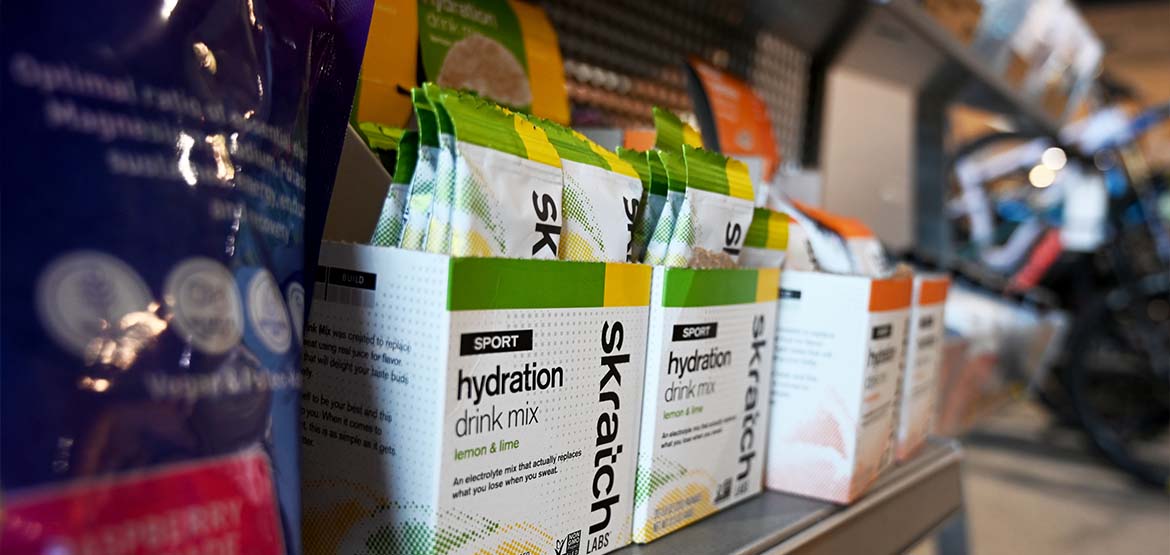
IS WATER ENOUGH?
As cyclists we also use up a lot more electrolytes than those with a more sedentary lifestyle. Electrolytes are mineral particles in your body that have an electric charge and maintain your body’s metabolic processes and vital body functions.
There are seven electrolytes, and the three main ones of importance to cyclists are sodium, potassium, and chloride.
Sodium, the key electrolyte required by the working body, plays the critical role in helping the cells maintain the correct balance of fluid levels outside our cells.
Potassium is sodium’s counterpart and is crucial to maintaining the correct balance of fluids levels inside our cells. It also helps muscle contraction and supports normal blood pressure. Excellent dietary sources are fruits and vegetables like banana, avocado and sweet potato.
It’s not optimal to carry a shaker of salt and a bag of produce with you, so make sure you’re getting enough in your diet. Additionally, you will find many sports hydration products that offer electrolyte supplementation in their blend.
Going into hydration debt is uncomfortable, so keeping your fluid levels topped up is crucial to your comfort, health, and safety. Going into hydration bankruptcy can be fatal and one must be prepared and supplied to ensure a safe arrival home after the ride. Below you will find everything you need to stay hydrated on any level or length of ride. Packs, bottles, cages, drink mixes and devices. Stay hydrated, stay safe, and enjoy the ride!

